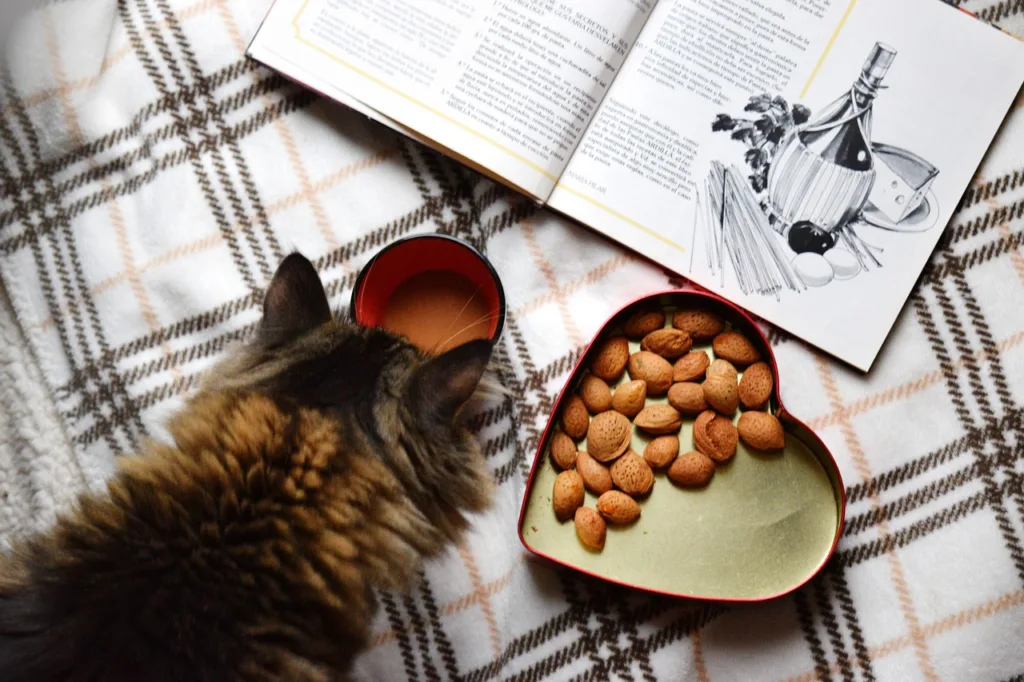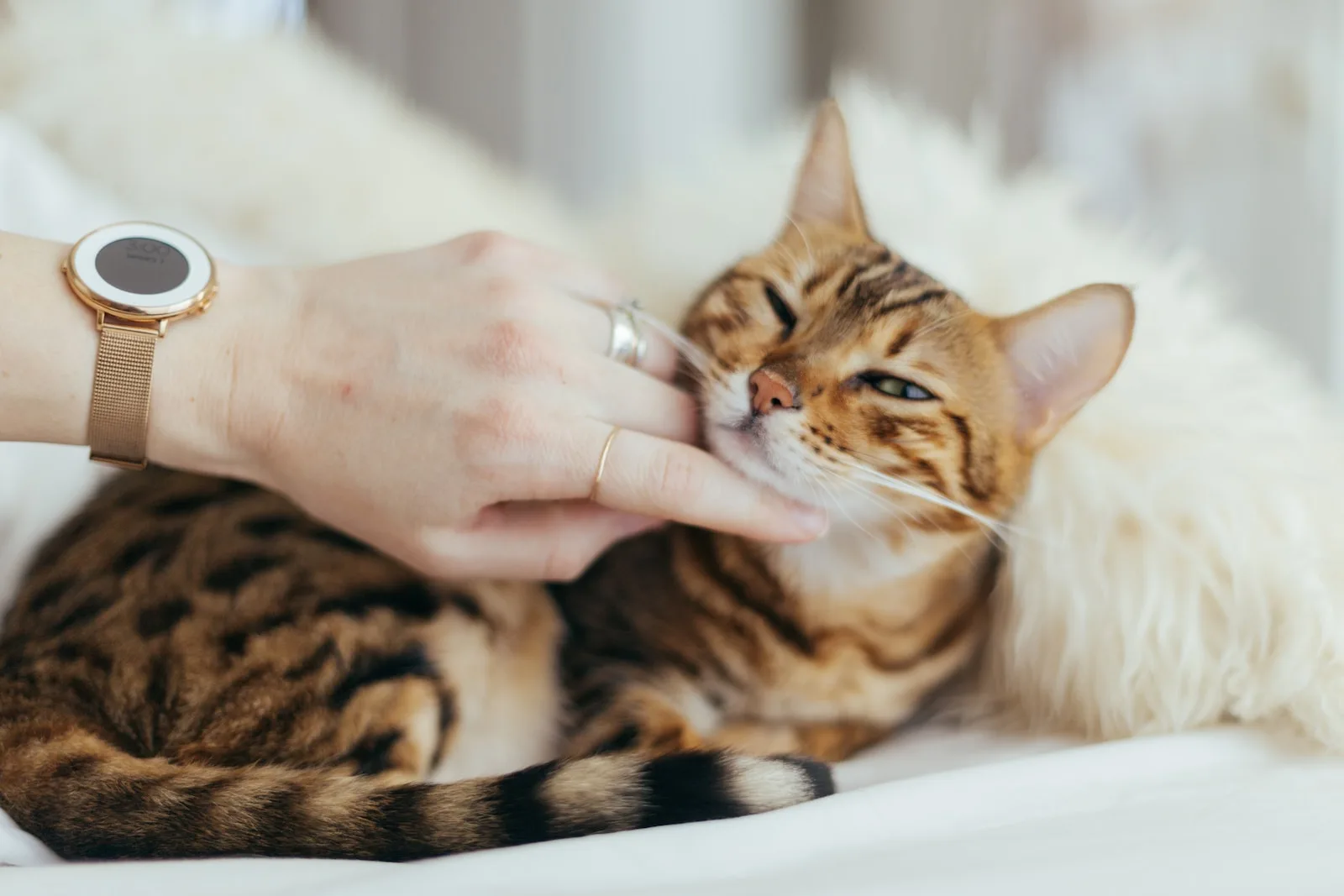Welcoming a furry friend back home after surgery can be a daunting experience for any pet owner. It’s important to provide the right care and attention to ensure a smooth recovery for your cat. In this comprehensive guide, we will walk you through the essential steps and tips for postoperative cat care.
Recovering from surgery can be a delicate process for cats, and it’s crucial to follow the proper protocols for their well-being. From managing their pain to caring for their wounds, each step plays a significant role in their overall recovery.
- What to Expect After Cat Surgery
- How to Care for Your Cat After Surgery
- Collecting Your Cat from the Vet After Surgery
- Feeding Your Cat After Surgery
- Restricting Your Cat's Movement After Surgery
- Caring for Your Cat's Wounds After Surgery
- Caring for Your Cat After Neutering
- Caring for Your Cat's Mouth After Dental Surgery
- How to Tell If Your Cat Is in Pain After Surgery
- When to Call the Vet After Cat Surgery
- Conclusion
- FAQ
- Source Links
Key Takeaways:
- Provide a warm and comfortable environment for your cat after surgery.
- Restrict their activity and monitor for any signs of nausea, drowsiness, or coughing.
- Use an Elizabethan collar to prevent licking or chewing of the wound.
- Attend follow-up appointments and administer prescribed medication as instructed.
- Monitor the cat’s wounds for any signs of continuous bleeding, excessive swelling, redness, or discharge.
What to Expect After Cat Surgery
Recovering from cat surgery requires careful attention to your furry friend’s needs. Understanding the healing process and implementing post-operative care is essential for a smooth recovery. Here’s what you can expect after your cat undergoes surgery:
Recovery Time:
The duration of recovery depends on the type of surgery your cat has undergone. Soft tissue surgeries typically take around two to three weeks to heal, while orthopedic surgeries may require a longer recovery period. During this time, it is important to provide a comfortable and quiet space for your cat to rest and recover.
Post-Operative Effects:
After surgery, your cat may experience sleepiness and a mild loss of appetite due to the lingering effects of general anesthesia. It is normal for your cat to be a little groggy and less interested in food immediately after surgery. To ensure proper nutrition, feed small portions of plain, high-protein food such as chicken or fish. Pain management medications may also be prescribed to keep your cat comfortable.
Protective Measures:
During the healing process, it is crucial to restrict your cat’s movement and prevent them from licking or chewing the surgical site. Your veterinarian may recommend using protective collars to prevent your cat from interfering with the wound. Additionally, attending follow-up appointments for monitoring and wound dressing is important for a successful recovery.
While every cat’s recovery will be unique, understanding what to expect after surgery and providing the necessary care and attention will help ensure a smooth healing process for your furry friend.
How to Care for Your Cat After Surgery
When your cat undergoes surgery, it is essential to provide them with the proper care and attention during their recovery. Following the postoperative instructions provided by the veterinarian is crucial for their well-being. Here are some tips and guidelines to help you care for your cat after surgery:
Creating a Calm and Comfortable Environment
After surgery, it is important to create a calm and comfortable environment for your cat at home. Set up a quiet space where they can rest and recuperate without any disturbances. Make sure the temperature is warm and cozy, and provide soft bedding for them to relax on. Keep their surroundings clean and free from any potential hazards or contaminants.
Feeding and Hydration
During the recovery period, it is essential to feed your cat small, light meals that are easily digestible. Consult with your veterinarian to determine the appropriate diet for your cat post-surgery. Make sure they have access to fresh water at all times to stay hydrated. Monitor their appetite closely, as a reduced appetite might be expected initially. If their appetite does not improve or they refuse to eat for an extended period, contact your veterinarian for guidance.
Limiting Movement and Monitoring
Restricting your cat’s movement is crucial to prevent any potential injuries and disruptions to the healing process. Follow your veterinarian’s instructions regarding activity restrictions and provide a safe and confined space for your cat to recover. Monitor their behavior closely for any signs of pain, discomfort, or complications. If you notice anything unusual or concerning, contact your veterinarian for further guidance and support.

Collecting Your Cat from the Vet After Surgery
After the surgery, it is time to bring your furry friend back home. It is important to follow the vet’s post-operative advice to ensure a smooth recovery for your cat. When you pick up your cat from the vet, keep in mind that they may be quieter and sleepier than usual. It is normal for them to have a reduced appetite initially, but don’t worry, it’s just the effect of the anesthesia wearing off. It is essential to create a peaceful space for your cat to recover at home, away from loud noises and other pets.

Administering any prescribed medication as instructed is crucial. Make sure you understand the dosage and schedule for giving the medication to your cat. If your cat is resistant to taking pills, you can try opening tablets and sprinkling them on their food. However, always consult with your vet before altering the administration of any medication.
Caring for Your Cat’s Comfort
When you bring your cat home, provide them with a warm and cozy space where they can rest undisturbed. Use soft bedding and ensure that the area is free from drafts. Cats may prefer a quiet corner or a comfortable cat bed where they can feel safe and secure during their recovery. Keep in mind that your cat’s activity should be limited during this period, so it’s important to provide them with a calm environment where they can relax and heal.
Monitoring Your Cat’s Recovery
During the cat recovery period, it is crucial to monitor your cat closely for any signs of complications or discomfort. Keep an eye on their incision site to ensure that it is clean and free from any signs of infection. If you notice any redness, swelling, discharge, or if the incision appears to be reopening, contact your vet immediately. Additionally, observe your cat’s behavior and appetite. If they seem unusually lethargic, have difficulty eating, or show signs of pain, it is important to consult with your vet.
“Bringing your cat home after surgery can be both exciting and worrisome. Remember to provide a calm and comfortable space for your cat’s recovery, closely monitor their comfort and incision site, and administer any prescribed medication as instructed. With proper care, your cat will be on the road to a speedy recovery!”
Feeding Your Cat After Surgery
Proper nutrition is vital for your cat’s recovery after surgery. While cats may feel nauseated, it is important to offer small portions of plain, high-protein food such as chicken or fish. Avoid tinned foods containing jelly or gravy initially and gradually transition back to their normal food as their appetite returns. It is crucial to provide fresh water at all times to keep your cat hydrated and aid in their healing process. If your cat experiences a loss of appetite for more than a day, it is essential to contact your veterinarian for further guidance.

In addition to regular meals, consider incorporating any prescribed dietary supplements or medications into your cat’s feeding routine. These supplements can help promote healing, reduce inflammation, and support their overall health during the recovery process. Be sure to follow your veterinarian’s instructions regarding the administration of these supplements.
Postoperative Cat Feeding Tips:
- Offer small portions of plain, high-protein food
- Avoid tinned foods containing jelly or gravy initially
- Gradually transition back to their normal food as appetite returns
- Provide fresh water at all times
- Consider incorporating prescribed dietary supplements or medications
- Follow your veterinarian’s instructions regarding their administration
Remember, each cat is unique, and their dietary needs may vary. It is essential to consult your veterinarian for specific feeding instructions tailored to your cat’s individual recovery needs. By providing proper nutrition and following your veterinarian’s guidance, you can support your cat’s healing process and help them regain their strength and energy after surgery.
Restricting Your Cat’s Movement After Surgery
After surgery, it is important to restrict your cat’s movement to aid in the healing process. This helps prevent any additional strain or injury to the surgical site. Your veterinarian may recommend specific restrictions based on the type of surgery your cat underwent. These restrictions could include limiting jumping, running, or playing for a certain period of time.
One way to restrict your cat’s movement is by creating a smaller area of the house for them to stay in temporarily. Remove any furniture or objects that your cat may jump on or climb. This helps ensure they can only move around in a safe and controlled environment. Additionally, providing a comfortable bed or blanket in this area will help keep your cat calm and relaxed during their recovery.
Feeding enrichment activities can also be beneficial during this restricted period. Using puzzle feeders or slow-feed bowls can help keep your cat mentally stimulated while reducing their physical activity. These activities encourage your cat to work for their food, providing both mental and physical stimulation without putting strain on the surgical site.
“Restricting your cat’s movement after surgery is crucial for their recovery. By following your veterinarian’s recommendations and creating a safe and comfortable environment for your cat, you can help ensure a smooth healing process.”
It is important to remember that every cat’s recovery is unique, and it is essential to follow your veterinarian’s specific instructions for post-operative care. By restricting your cat’s movement after surgery, you are providing them with the best chance for a successful recovery and a return to their normal activities.

Table: Recommended Restrictions for Common Cat Surgeries
| Surgery Type | Recommended Movement Restrictions |
|---|---|
| Soft Tissue Surgery | Restricted activity for 7-10 days |
| Orthopedic Surgery | Restricted activity for 4-6 weeks |
| Spay/Neuter Surgery | Restricted activity for 7-10 days |
| Dental Surgery | No specific restrictions, but avoid hard chew toys for a week |
Caring for Your Cat’s Wounds After Surgery
After surgery, it is essential to take proper care of your cat’s wounds to ensure a smooth healing process. Here are some important guidelines to follow:
- Regularly check the cat’s wounds for any signs of infection, such as excessive swelling, bleeding, redness, or discharge. If you notice any of these symptoms, it is crucial to contact your vet immediately.
- Prevent the cat from interfering with the wound by using a protective collar. This will prevent licking or chewing, which can lead to infection or the removal of stitches. Keep the bandages clean and dry to promote healing.
- If your cat has non-dissolvable stitches, your vet will provide instructions on when and how to remove them. Follow these instructions carefully to avoid complications.
Remember, proper wound care is crucial for your cat’s recovery after surgery. By monitoring the wounds, using protective collars, and keeping the bandages clean, you can help ensure a successful healing process.
Table: Signs of Infection in a Cat’s Wound
| Signs of Infection | Description |
|---|---|
| Excessive swelling | An abnormal amount of swelling around the wound site |
| Bleeding | Continuous or excessive bleeding from the wound |
| Redness | The wound appears red or inflamed |
| Discharge | Pus or fluid coming from the wound |
It is important to remember that complications can arise after surgery, and monitoring your cat’s wounds is vital. If you notice any signs of infection or have concerns about your cat’s recovery, do not hesitate to contact your vet for guidance.
Caring for Your Cat After Neutering
Neutering is an important surgical procedure for cats, and proper aftercare is crucial for a smooth recovery. After the surgery, it’s essential to keep your cat calm and restrict their activity to allow their body to heal. Monitoring the surgical site for any signs of infection or complications is important, and preventing your cat from licking the wound is crucial. Attending follow-up appointments with the vet is also necessary to ensure that your cat is healing properly.
For male cats, the surgical site will appear as a small incision on the scrotum, which may have a few stitches. It is normal for the area to be slightly swollen and bruised for a few days after the surgery. Keeping the area clean and dry will aid in the healing process. If you notice any excessive swelling, bleeding, or discharge, contact your vet immediately.
Female cats undergo a more invasive surgery, and their surgical site will be located on the abdomen. It is normal for the incision to be closed with internal stitches, which will dissolve on their own over time. However, if you notice any redness, swelling, or discharge, it’s important to contact your vet for further advice. Limiting your cat’s activity and providing a comfortable and calm environment will help support their recovery.
| Male Cat Neutering Aftercare | Female Cat Neutering Aftercare | |
|---|---|---|
| Incision Location | Scrotum | Abdomen |
| Stitches | Usually a few visible stitches | Internal stitches that dissolve over time |
| Swelling and Bruising | Normal for a few days | Normal for a few days |
| Care Instructions | Keep area clean and dry, monitor for any signs of infection | Keep area clean and dry, monitor for any signs of infection |
Neutering is an important part of responsible pet ownership, and providing proper aftercare will ensure a healthy and comfortable recovery for your cat. By following the post-operative instructions provided by your vet and monitoring your cat’s progress, you can help them heal and prevent any complications that may arise.
Caring for Your Cat’s Mouth After Dental Surgery
After your cat undergoes dental surgery, proper post-operative care is essential to ensure a smooth recovery. This includes providing a soft diet, monitoring their appetite and behavior, and contacting the vet if any concerns arise. Here are some key steps to follow in caring for your cat’s mouth after dental surgery:
- Softening their food: Soak their food in water to make it easier for them to chew and swallow. This will help alleviate any discomfort they may have and ensure they continue to eat.
- Monitoring their appetite and behavior: Pay close attention to their eating habits and overall behavior. If your cat is reluctant to eat or seems unwell, it’s important to contact your vet for further guidance.
- Keeping their mouth clean: Depending on the type of dental surgery, your cat’s mouth may require special attention. Follow your vet’s instructions for cleaning the surgical site, if necessary, to prevent infection and promote healing.
Remember, every cat is unique, and their recovery time may vary. It’s crucial to provide them with a calm and comfortable environment during this critical healing period. By following the post-operative care instructions provided by your vet, you can help ensure a successful recovery for your beloved feline companion.
Table: Recommended Post-Operative Care for Cats After Dental Surgery
| Post-Operative Care Steps | Description |
|---|---|
| Softening Their Food | Soak their food in water to make it easier to chew and swallow. |
| Monitoring Appetite and Behavior | Observe their eating habits and overall behavior to ensure they are recovering well. |
| Keeping the Mouth Clean | Follow your vet’s instructions for cleaning the surgical site, if necessary, to prevent infection. |
How to Tell If Your Cat Is in Pain After Surgery
After surgery, it is crucial to monitor your cat for any signs of pain or discomfort. Cats are experts at hiding their pain, so it’s essential to pay close attention to their behavior and overall well-being. Here are some signs that may indicate your cat is experiencing pain after surgery:
- Aggression: If your usually calm cat becomes unusually aggressive or agitated, it could be a sign of pain.
- Avoidance of grooming: Cats are typically meticulous groomers, so if your cat stops grooming themselves or is unable to groom certain areas, it may be due to pain or discomfort.
- Excessive vocalization: Increased meowing, hissing, or growling can be a sign that your cat is in pain. They may be trying to communicate their discomfort to you.
- Loss of appetite: A cat in pain may have a reduced appetite or refuse to eat altogether. This can be a significant indicator of their discomfort.
- Sleepiness: While it’s normal for cats to be a bit sleepy after surgery, excessive lethargy or prolonged periods of sleepiness may be a sign of pain.
If you observe any of these signs in your cat, it’s essential to contact your vet for further guidance. They will be able to assess your cat’s condition and recommend appropriate pain management strategies or additional treatment if necessary.
“Pain is the body’s way of telling us that something is not right. As pet owners, it’s our responsibility to be vigilant and proactive in recognizing and addressing our cats’ pain after surgery.”
Being aware of the signs of pain in cats after surgery can help ensure that your furry friend receives the necessary care and relief. Remember to provide a calm and comfortable environment, follow the post-operative instructions from your vet, and attend follow-up appointments as recommended. By taking these steps, you can help your cat recover successfully and get back to their happy and healthy self.
| Signs of Pain in Cats After Surgery | Description |
|---|---|
| Aggression | Cats may display unusual aggression or agitation when experiencing pain. |
| Avoidance of Grooming | Cats may stop grooming themselves or avoid grooming certain areas if they are in pain. |
| Excessive Vocalization | Increased meowing, hissing, or growling can be a sign of pain or discomfort. |
| Loss of Appetite | A reduced appetite or refusal to eat may indicate that your cat is in pain. |
| Sleepiness | While some sleepiness is expected after surgery, excessive lethargy may be a sign of pain. |
When to Call the Vet After Cat Surgery
After your cat undergoes surgery, it’s important to closely monitor their recovery and be aware of any potential complications. If you notice any of the following signs, it’s crucial to contact your veterinarian for guidance and assistance:
- Persistent cough: While a slight cough after surgery is normal, if your cat continues to cough excessively or struggles to breathe, it could be a sign of respiratory issues or infection.
- Missing stitches or open wounds: If you notice that any stitches have come loose or if there are open wounds that are not healing properly, it’s essential to contact your vet immediately. This can increase the risk of infection and may require further medical intervention.
- Loss of appetite: While some decrease in appetite is normal initially after surgery, if your cat refuses to eat for an extended period or shows a significant decrease in appetite, it may indicate an underlying issue that requires veterinary attention.
- Unusual behavior: If your cat is displaying any unusual behavior such as extreme lethargy, aggression, or excessive hiding, it could be a sign of pain or discomfort. Contacting your vet will help determine if there are any complications.
Remember, it’s always better to be safe than sorry when it comes to your cat’s health. If you have any concerns or notice any abnormal symptoms, don’t hesitate to reach out to your veterinarian for advice and support.
Conclusion
In summary, the recovery period after cat surgery requires careful attention and proper care. Creating a calm and comfortable environment for your cat is essential, as well as following the post-operative instructions provided by your vet. Monitoring your cat for any signs of pain or complications is crucial to ensure a successful recovery.
During the recovery period, it is important to restrict your cat’s movement and provide them with a quiet space to rest. Feeding your cat small portions of plain, high-protein food and ensuring they have access to fresh water is vital for their nutrition and overall well-being.
Proper wound care is also important, including using protective collars to prevent your cat from licking or chewing the incision site. Regularly checking the wounds for any signs of infection, such as excessive swelling, bleeding, redness, or discharge, is necessary. Remember to attend follow-up appointments with your vet to ensure that your cat’s healing progress is being monitored.
With proper care and attention, your cat can recover well after surgery and return to their normal activities and behaviors. If you have any concerns or notice any unusual signs during the recovery period, do not hesitate to contact your vet for advice and assistance. Your veterinarian is there to support you and your cat throughout the entire recovery process.
FAQ
How should I care for my cat after surgery?
Keep your cat warm and comfortable, restrict their activity for a week, provide half their usual dinner a few hours after returning home, monitor for signs of nausea, drowsiness, or coughing, prevent licking or chewing of the wound, and contact the hospital if any stitches are removed.
How long does it take for cats to recover from surgery?
The recovery time varies depending on the type of surgery, with soft tissue surgeries healing within two to three weeks and orthopedic surgeries taking longer to fully recover.
What should I expect after my cat’s surgery?
Expect your cat to be sleepier than usual and have a reduced appetite initially due to the effects of general anesthesia. Feeding small portions of plain, high-protein food and providing a comfortable and quiet space for recovery are recommended.
How can I prevent my cat from licking or chewing the wound?
Use an Elizabethan collar to prevent your cat from interfering with the wound. If your cat chews the stitches, contact the hospital immediately.
How should I care for my cat’s wounds after surgery?
Regularly check the incision for cleanliness and ensure the edges are together. If you notice continuous bleeding, excessive swelling, redness, or discharge, report it to the hospital. Use protective collars to prevent licking or chewing, and keep the bandages clean and dry.
How long should my cat’s activity be restricted after surgery?
Restrict your cat’s activity until the sutures are removed, which is typically within seven to fourteen days. Follow the vet’s recommendations regarding movement restriction.
What should I feed my cat after surgery?
Offer small portions of plain, high-protein food such as chicken or fish. Avoid tinned foods containing jelly or gravy initially and gradually transition back to their normal food as their appetite returns.
How can I ensure my cat gets enough rest after surgery?
Restrict your cat’s movement to prevent injury and disruption of the healing process. Create a smaller area of the house without furniture to jump on and provide feeding enrichment to alleviate boredom.
When should I contact the vet after cat surgery?
Contact the vet if you notice any signs of pain or complications, such as persistent cough, missing stitches or open wounds, loss of appetite, or unusual behavior.




